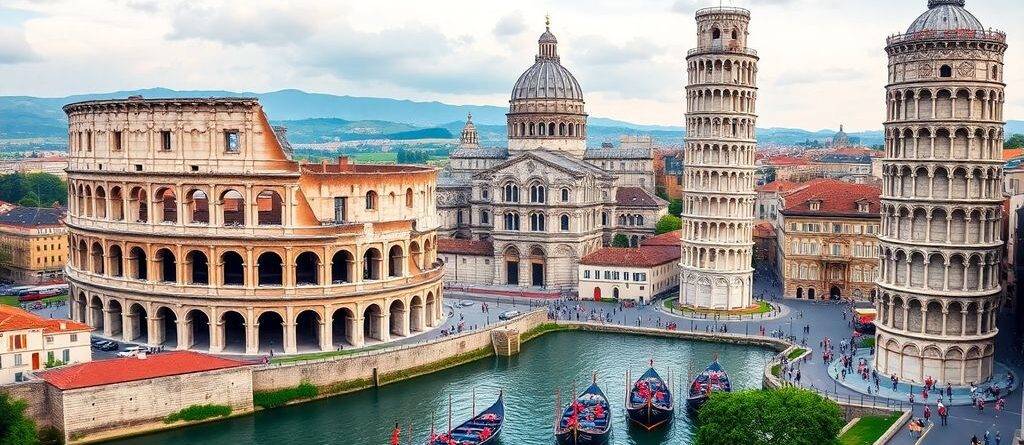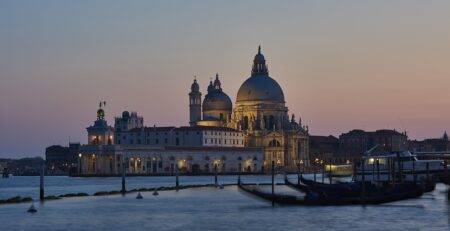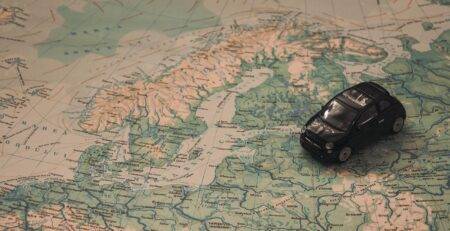Traveling to Italy can be an exciting adventure filled with beautiful sights, delicious food, and rich culture. However, it’s important to be aware of certain travel advisories and guidelines to ensure a safe and enjoyable trip. This article covers essential information every traveler should know before visiting Italy, from safety measures to health requirements and cultural customs. italy travel advisories
Key Takeaways
- Italy currently has a Level 2 travel advisory, meaning travelers should be more cautious, especially in busy tourist areas.
- Health measures include routine vaccinations and guidelines for COVID-19, so make sure to check these before your trip.
- When entering Italy, you may need to show proof of funds and a return ticket, so keep these documents handy.
- Public transportation is a good option for getting around, but if you rent a car, book it early due to limited availability.
- Be aware of local customs and etiquette to better connect with the culture and people during your visit.
Current Travel Advisories and Safety Measures

Understanding the Level 2 Travel Advisory
When I think about Italy travel advisories, I remember that the current advisory is at Level 2. This means I should exercise caution while traveling. It’s important to stay updated on local news and follow any instructions from authorities. italy travel advisories
Areas Identified as Potential Targets
Certain areas in Italy are more prone to security issues. I always keep an eye on:
- Major tourist attractions
- Public transportation hubs
- Large gatherings or events
Increased Police and Military Presence
I’ve noticed an increased police and military presence in busy areas, especially during holidays. This is meant to ensure safety, but it’s wise to remain vigilant. Here’s a quick overview of what to expect:
| Location Type | Security Level | Notes |
|---|---|---|
| Tourist Attractions | High | Expect checks and patrols |
| Public Transport Hubs | Moderate | Be aware of surroundings |
| Major Events | Very High | Follow local media updates |
Staying informed and cautious can greatly enhance my travel experience in Italy.
In summary, being aware of the current travel advisories and safety measures can help me enjoy my trip while staying safe. I always remember to keep my belongings secure and be mindful of my surroundings, especially in crowded places. italy travel advisories
Health and Vaccination Requirements
Routine Vaccinations
Before I travel to Italy, I make sure my routine vaccinations are up-to-date. Some important ones include:
- Measles-mumps-rubella (MMR)
- Diphtheria
- Tetanus
- Pertussis
- Polio
- Varicella (chickenpox)
- Influenza
COVID-19 Guidelines
I also check the latest COVID-19 guidelines. It’s recommended that all eligible travelers complete their COVID-19 vaccine series before heading to Italy. This helps protect against severe illness and hospitalization. If I haven’t been vaccinated, I know I’m at a higher risk of getting sick while traveling.
Other Health Risks and Notices
In addition to routine vaccines, I pay attention to other health risks. For example, rabies can be found in some wildlife, so I avoid contact with animals. If I get bitten, I wash the wound immediately and seek medical help. Here are some other health precautions: italy travel advisories
- Stay hydrated and drink safe water.
- Be cautious with food to avoid stomach issues.
- Protect myself from mosquito bites, especially during the day.
It’s always a good idea to consult a health care professional at least six weeks before traveling to get personalized advice.
| Health Risk | Recommendation |
|---|---|
| Measles | Ensure MMR vaccination is current |
| COVID-19 | Complete vaccine series |
| Rabies | Avoid animal contact |
| Tick-borne diseases | Use insect repellent in wooded areas |
By following these health and vaccination requirements, I can enjoy my trip to Italy with peace of mind!
Entry and Exit Requirements

Visa and Passport Regulations
When I travel to Italy, I need to be aware of the visa and passport rules. For most travelers, a visa is not needed for stays up to 90 days in the Schengen area. However, I must ensure that my passport is valid for at least three months beyond my planned departure from the Schengen area. This is crucial to avoid any issues at the border.
Declaration of Presence
If I plan to stay in Italy for less than 90 days, I don’t need a residence permit, but I must file a declaration of presence. Here’s how I can do it:
- If I’m staying in a hotel, they usually handle this for me.
- If I’m in a private rental, I need to report to the local police within 8 days of arrival.
- If I come from a non-Schengen country, I should ensure my passport is stamped upon entry, as this acts as my declaration.
Customs and Cash Controls
When entering Italy, customs officials may ask for a return ticket and proof of funds for my stay. It’s a good idea to have these documents ready. Here’s a quick checklist:
- Return or onward ticket
- Proof of sufficient funds
- Passport with required validity
Remember, every country has its own rules for entry and exit. It’s important to check the latest information before I travel to avoid any surprises!
Transportation and Road Safety

Public Transportation Options
When I travel in Italy, I find that public transportation is quite convenient. Here are some options I often use:
- Trains: They connect major cities and are usually on time.
- Buses: They cover areas that trains don’t reach.
- Metro: In cities like Rome and Milan, the metro is fast and efficient.
Driving in Italy
Driving in Italy can be an adventure! However, I always keep in mind:
- Narrow streets: Many city roads are tight and crowded.
- Traffic rules: Not everyone follows them, so I stay alert.
- Parking: Finding a spot can be tough, especially in busy areas.
Car Rentals and Availability
If I decide to rent a car, I make sure to check:
- Documentation: I always have my driver’s license and rental agreement ready.
- Insurance: It’s important to have coverage in case of accidents.
- Fuel policy: I prefer full-to-full to avoid extra charges.
Always be cautious on the roads. I’ve noticed that road conditions can vary, especially in city centers where they are not great.
In summary, whether I’m using public transport or driving, I make sure to stay aware of my surroundings and follow local rules. This way, I can enjoy my trip without any worries!
Natural Disasters and Climate

Seismic Activity and Volcanoes
Italy is known for its active seismic zone, which means earthquakes can happen. I always keep an eye on local news for updates. Some areas, like Sicily, have active volcanoes such as Mount Etna, which can erupt and cause ash fall. If you’re near a volcano, it’s crucial to:
- Monitor volcanic activity through local media.
- Stay informed about potential hazards.
- Follow local authorities’ advice.
Wildfires and Coastal Safety
During the summer, wildfires can occur, especially in regions like Sicily and Calabria. The air quality can worsen due to smoke. If there’s a major fire, I make sure to:
- Stay away from affected areas, especially if I have breathing issues.
- Follow emergency services’ instructions.
- Keep updated through local news.
Weather Conditions and Precautions
Heavy rains in fall and winter can lead to flooding and landslides. I always check weather alerts before traveling. Here are some tips:
- Be cautious around rivers during heavy rain.
- Stay informed about weather forecasts.
- Follow local authorities’ instructions, especially during evacuations.
Always be prepared for unexpected weather changes. It’s better to be safe than sorry!
Cultural Etiquette and Local Customs
Social Interactions and Etiquette
When I visit Italy, I quickly learn that social interactions are key. Italians are warm and friendly, often greeting each other with cheek kisses. However, it’s important to know that the number of kisses can vary by region. In some places, it’s two, while in others, it might be three. Here are a few tips to keep in mind:
- Always greet with a smile.
- Use titles like “Signore” or “Signora” when addressing someone.
- Be prepared for lively conversations; Italians love to express themselves!
Regional Pride and Traditions
Every region in Italy has its own unique customs and traditions. This pride is known as campanilismo. When I travel, I enjoy tasting local dishes and participating in regional festivals. Here are some traditions to look out for:
- Food festivals celebrating local cuisine.
- Historical reenactments in towns.
- Unique local dialects that vary from one area to another.
Language and Communication
While many Italians speak English, I find that learning a few Italian phrases can go a long way. It shows respect and can lead to warmer interactions. Here are some useful phrases:
- “Buongiorno” (Good morning)
- “Grazie” (Thank you)
- “Per favore” (Please)
Remember, hand gestures are a big part of communication in Italy. However, I’ve learned to be careful not to mimic them without understanding their meanings. Misunderstandings can happen!
In summary, embracing the local customs and being respectful of traditions can make my experience in Italy much more enjoyable. Understanding these cultural nuances helps me connect with the locals and truly appreciate the beauty of this wonderful country.
Final Thoughts on Traveling to Italy
In conclusion, visiting Italy can be an amazing experience, but it’s important to stay aware of certain things. As of October 2024, travelers should be cautious due to a Level 2 travel advisory, which warns about possible risks like terrorism in busy areas. Make sure to keep your belongings safe and be careful in crowded places. Also, remember to check local customs and rules, as they can be different from what you’re used to. By being prepared and informed, you can enjoy all the beautiful sights, delicious food, and rich culture that Italy has to offer.
Frequently Asked Questions
What is the current travel advisory level for Italy?
As of October 2024, Italy is under a Level 2 travel advisory. This means travelers should be more cautious because of possible terrorism risks.
Are there specific areas in Italy that are considered dangerous?
Yes, tourist spots, transportation hubs, and major public areas are seen as potential targets for attacks.
What health vaccinations do I need before visiting Italy?
Make sure your routine vaccinations are up-to-date. It’s also wise to check COVID-19 guidelines and other health risks.
Do I need a visa to enter Italy?
If you’re a Canadian citizen, you don’t need a visa for visits up to 90 days. Just ensure your passport is valid.
What are the main modes of transportation in Italy?
Public transport is widely available, including buses and trains. Renting a car is also an option, but it’s not necessary for most travelers.
What should I know about local customs in Italy?
Italians take pride in their regional cultures. It’s important to respect local traditions and social interactions when visiting.




